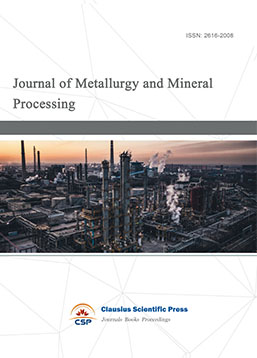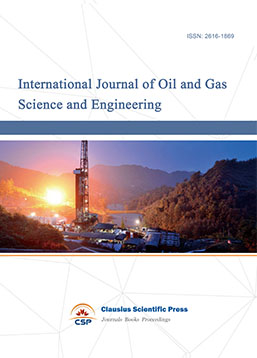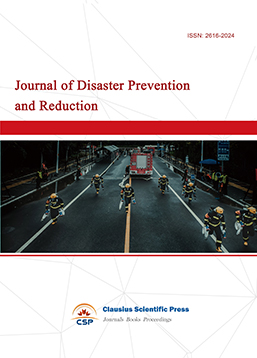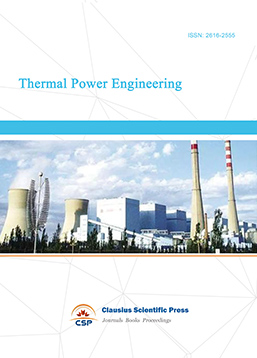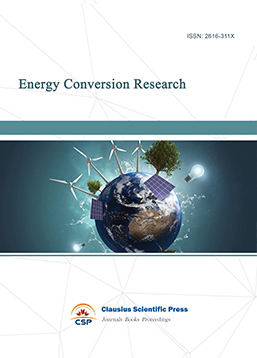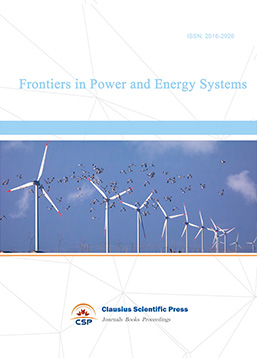Experimental Investigation on the Influence of Dust on PV Panel Performance and Its Surface Temperature
DOI: 10.23977/ssge.2018.11002 | Downloads: 86 | Views: 6712
Author(s)
Abhishek Kumar Tripathi 1, Ch.S.N. Murthy 1, M. Aruna 2
Affiliation(s)
1 Department of Mining Engineering, A.K.S. University, Satna, M.P., India
2 Department of Mining Engineering, National Institute of Technology Karanataka, Surathkal, India
Corresponding Author
Abhishek Kumar TripathiABSTRACT
The energy demand and present climate change are critically driving all countries of the world towards solar energy as a sustainable renewable and environment friendly source of energy. Solar photovoltaic (PV) is required to convert solar energy into electrical energy and its performance is primarily dictated by its surrounding environmental parameters, such as dust, temperature, wind speed and humidity. The deposition of dust on the PV module surface procreates less impact on an open circuit voltage, whereas it procreates significant impacts on the short circuit current and maximum power output of PV panel. This study shows that the reduction of short circuit current and output power of PV module are 0 to 30.56% and 0 to 40%, respectivel,y with the deposition of the dust from 0 to 11gm on the module surface. Moreover, this study also demonstrates that the surface temperature of the dusty panel is higher (12.32%) than the clean panel under the same working conditions.
KEYWORDS
Dust, photovoltaic, power output, short circuit current, open circuit voltage.CITE THIS PAPER
Abhishek Kumar Tripathi, Ch.S.N. Murthy and M. Aruna, Experimental Investigation on the Influence of Dust on PV Panel Performance and Its Surface Temperature. Smart Systems and Green Energy (2018) 1: 15-22.
REFERENCES
[1] Nehrir, M. H., Wang, C., Strunz, K., Aki, H., Ramakumar, R., Bing, J., ... & Salameh, Z. (2011). A review of hybrid renewable/alternative energy systems for electric power generation: Configurations, control, and applications. IEEE Transactions on Sustainable Energy, 2(4), 392-403.
[2] Ozturk, I., Aslan, A., & Kalyoncu, H. (2010). Energy consumption and economic growth relationship: Evidence from panel data for low and middle income countries. Energy Policy, 38(8), 4422-4428.
[3] Kabir, E., Kumar, P., Kumar, S., Adelodun, A. A., & Kim, K. H. (2018). Solar energy: Potential and future prospects. Renewable and Sustainable Energy Reviews, 82, 894-900.
[4] Mekhilef, S., Saidur, R., & Safari, A. (2011). A review on solar energy use in industries. Renewable and Sustainable Energy Reviews, 15(4), 1777-1790.
[5] Dincer, F. (2011). The analysis on photovoltaic electricity generation status, potential and policies of the leading countries in solar energy. Renewable and Sustainable Energy Reviews, 15(1), 713-720.
[6] Saidan, M., Albaali, A. G., Alasis, E., & Kaldellis, J. K. (2016). Experimental study on the effect of dust deposition on solar photovoltaic panels in desert environment. Renewable Energy, 92, 499-505.
[7] Adinoyi, M. J., & Said, S. A. (2013). Effect of dust accumulation on the power outputs of solar photovoltaic modules. Renewable energy, 60, 633-636.
[8] El-Shobokshy, M. S., Mujahid, A., & Zakzouk, A. K. M. (1985). Effects of dust on the performance of concentrator photovoltaic cells. IEE Proceedings I (Solid-State and Electron Devices), 132(1), 5-8.
[9] Elminir, H. K., Ghitas, A. E., Hamid, R. H., El-Hussainy, F., Beheary, M. M., & Abdel-Moneim, K. M. (2006). Effect of dust on the transparent cover of solar collectors. Energy conversion and management, 47(18-19), 3192-3203.
[10] Hee, J. Y., Kumar, L. V., Danner, A. J., Yang, H., & Bhatia, C. S. (2012). The effect of dust on transmission and self-cleaning property of solar panels. Energy Procedia, 15, 421-427.
[11] Semaoui, S., Arab, A. H., Bacha, S., Zeraia, H., & Boudjelthia, E. K. (2015). Sand effect on photovoltaic array efficiency in Algerian desert. In 2nd International Congress on Energy Efficiency and Energy Related Materials (ENEFM2014) (pp. 85-90). Springer, Cham.
[12] Touati, F. A., Al-Hitmi, M. A., & Bouchech, H. J. (2013). Study of the effects of dust, relative humidity, and temperature on solar PV performance in Doha: comparison between monocrystalline and amorphous PVS. International journal of green energy, 10(7), 680-689.
[13] E. Skoplaki and J. A. Palyvos, “On the temperature dependence of photovoltaic module electrical performance: A review of efficiency/power correlations,” Sol. Energy, vol. 83, no. 5, pp. 614–624, 2009.
[14] Mahfoud, A., Mekhilef, S., & Djahli, F. (2015). Effect of temperature on the GaInP/GaAs tandem solar cellperformances. International Journal of Renewable Energy Research (IJRER), 5(2), 629-634.
[15] S. Krauter, “Increased electrical yield via water flow over the front of photovoltaic panels,” Sol. Energy Mater. Sol. Cells, vol. 82, no. 1, pp. 131–137, 2004.
[16] Schwingshackl, C., Petitta, M., Wagner, J. E., Belluardo, G., Moser, D., Castelli, M., ... & Tetzlaff, A. (2013). Wind effect on PV module temperature: Analysis of different techniques for an accurate estimation. Energy Procedia, 40, 77-86.
[17] Zegaoui, A., Petit, P., Aillerie, M., Sawicki, J. P., Belarbi, A. W., Krachai, M. D., & Charles, J. P. (2011). Photovoltaic cell/panel/array characterizations and modeling considering both reverse and direct modes. Energy Procedia, 6, 695-703.
[18] Berginc, M., Krašovec, U. O., Jankovec, M., & Topič, M. (2007). The effect of temperature on the performance of dye-sensitized solar cells based on a propyl-methyl-imidazolium iodide electrolyte. Solar energy materials and solar cells, 91(9), 821-828.
| Downloads: | 1346 |
|---|---|
| Visits: | 89879 |
Sponsors, Associates, and Links

 Download as PDF
Download as PDF